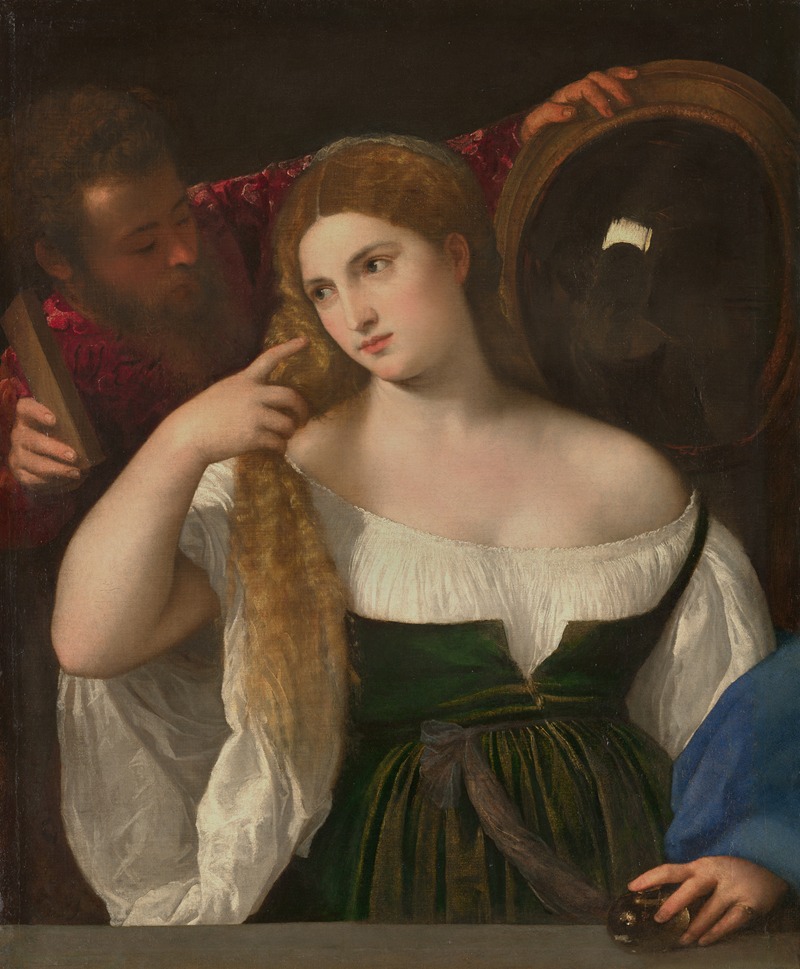
Portrait d’une Femme à sa Toilette
A hand-painted replica of Titian’s masterpiece Portrait d’une Femme à sa Toilette, meticulously crafted by professional artists to capture the true essence of the original. Each piece is created with museum-quality canvas and rare mineral pigments, carefully painted by experienced artists with delicate brushstrokes and rich, layered colors to perfectly recreate the texture of the original artwork. Unlike machine-printed reproductions, this hand-painted version brings the painting to life, infused with the artist’s emotions and skill in every stroke. Whether for personal collection or home decoration, it instantly elevates the artistic atmosphere of any space.
"Portrait d’une Femme à sa Toilette," also known as "Woman at Her Toilette," is a painting by the renowned Italian Renaissance artist Titian. Titian, whose full name was Tiziano Vecellio, was one of the most prominent painters of the 16th century, celebrated for his mastery of color and his influential contributions to the Venetian school of painting.
This particular work, "Portrait d’une Femme à sa Toilette," is believed to have been created around the mid-16th century, a period when Titian was at the height of his artistic powers. The painting depicts a woman engaged in her toilette, a term that refers to the process of grooming and dressing. This theme was a popular subject in Renaissance art, often symbolizing beauty, vanity, and the intimate rituals of daily life.
The composition of the painting is characteristic of Titian's style, which often featured rich, vibrant colors and a keen attention to detail. The woman in the painting is portrayed with a sense of grace and elegance, her expression serene and contemplative. She is adorned in luxurious garments, indicative of the wealth and status that such a subject might possess. The use of light and shadow in the painting highlights the textures of the fabrics and the softness of the woman's skin, showcasing Titian's skill in rendering the human form.
Titian's ability to capture the subtleties of human emotion and the intricacies of his subjects' surroundings is evident in this work. The painting not only reflects the aesthetic values of the Renaissance but also provides insight into the cultural and social norms of the time, particularly concerning the roles and perceptions of women.
The exact identity of the woman in the painting remains unknown, as is the case with many of Titian's portraits. This anonymity adds an element of mystery to the work, inviting viewers to speculate about her life and status. Despite this, the painting stands as a testament to Titian's ability to convey the universal qualities of beauty and introspection.
"Portrait d’une Femme à sa Toilette" is housed in the Musée du Louvre in Paris, where it is part of a vast collection of European paintings. The Louvre's collection includes several works by Titian, reflecting his enduring influence and the high regard in which his art is held.
In summary, "Portrait d’une Femme à sa Toilette" exemplifies Titian's mastery of portraiture and his contribution to the art of the Renaissance. Through its depiction of a woman at her toilette, the painting captures the elegance and complexity of its subject, while also offering a glimpse into the cultural context of its time.


















